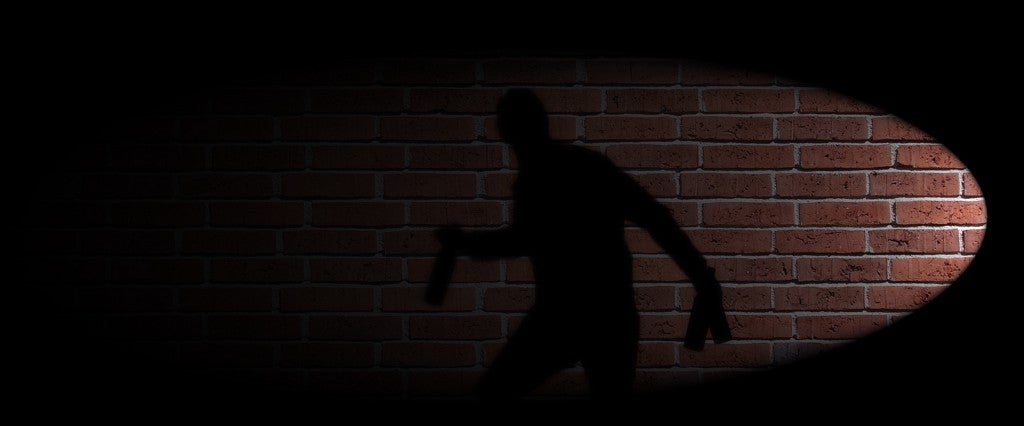When Franklin County, Kentucky, Sheriff Pat Melton heard news of a theft at the Buffalo Trace Distillery in Frankfort, it barely registered. He had a 200-square-mile county to police, nearly 50,000 souls. A burgeoning heroin problem had been responsible for 20 overdose deaths over the previous two years. It wasn’t until a local newspaper reporter called the next day, asking for details of the heist, that he pulled the case file.
On Oct. 14, 2013, according to the police report, more than 200 bottles of one of the world’s most sought-after bourbons, Pappy Van Winkle — valued between $30,000 and $50,000 — were reported missing from the distillery’s inventory.
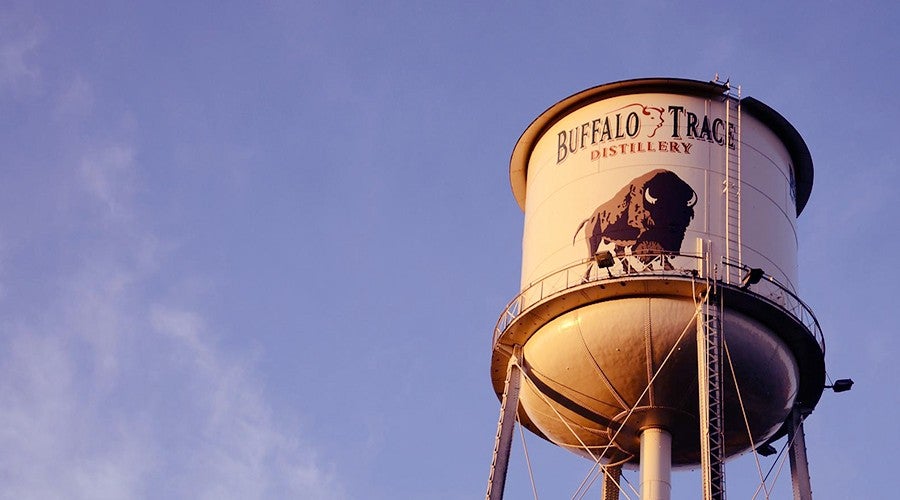
Melton had been a cop in Franklin County for 22 years — long enough to smell an inside job when he saw one. Nobody just sneaks into an iconic plant like Buffalo Trace and hauls away that much bourbon unless they know people in the facility.
“It’s a simple theft case, completely solvable,” he told the reporter.
It would be years before Melton realized how right — and how wrong — he’d actually been.
On March 11, 2015, nearly two years since the first reported thefts of Pappy had emerged, Jeff Farmer, a detective with Franklin County Sheriff’s Department, received a text: “You might be interested in whiskey being stolen in full barrels.”
After the initial report of the Pappy theft, the story had gone viral, known worldwide as Pappygate. Reporters flooded Frankfort. The New York Times, the Wall Street Journal, and the Washington Post did stories. TV news vans camped at the distillery’s entrance; workers had a hard time driving into the employee parking lot.
Despite the universal attention, a $10,000 reward and police interviews with more than 100 employees at the distillery, nothing solid came back. The case went cold. Until now.
According to the text received by Farmer, a longtime employee at Buffalo Trace, Toby Curtsinger, 46, and his friend, a delivery driver for Wild Turkey, Sean Searcy, 49, were responsible for stealing large quantities of whiskey. Police had no idea if these men were related to the earlier heist, but it was worth checking out.
The two men were born and raised in the general area, a sleepy southern town, ringed by thick forests, winding rivers and families who trace their bloodlines to the pioneers who settled these isolated hillsides. Both men were married with kids in grade school. They played softball with buddies on the weekend and pumped iron in a local gym.
The tipster said Searcy stopped at Curtsinger’s place along his delivery route between the Wild Turkey Distillery, in Lawrenceburg, and the company’s warehouse in Nicholasville, 25 miles away. During the stop, Searcy and Curtsinger unloaded five, 500-pound American White Oak barrels. Each held as much as 53-gallons of Wild Turkey whiskey.
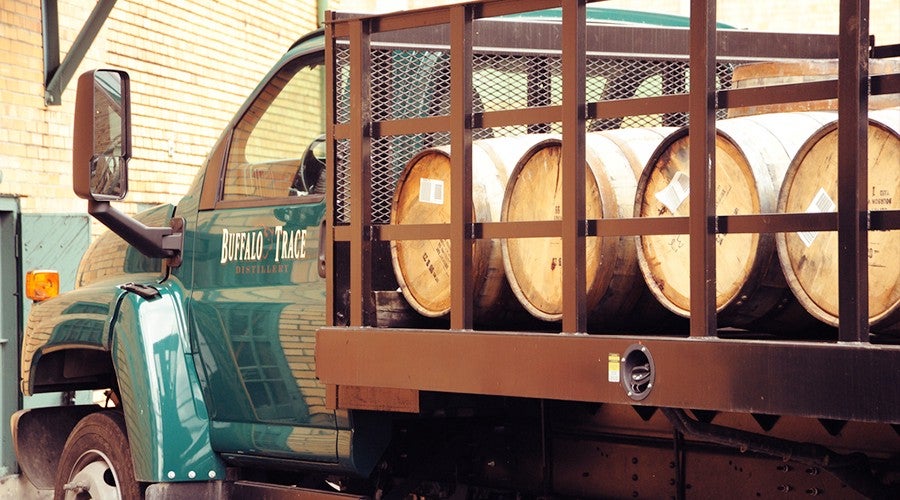
Farmer grabbed a fellow detective and their supervisor, Captain Ron Wyatt. The trio drove out of town to the address registered to Curtsinger — a white rancher with maroon shutters and a fenced-in front porch.
As soon as they stepped out of their vehicle, the trio eyed one another. The smell of bourbon was distinct—sweet and strongly alcoholic, with a note of yeasty caramel.
On the edge of the property the men noticed a pair of tire tracks leading into the woods. From there detectives could see the backside of the house, a small shed and a bourbon barrel lying on its side on the ground — a potential smoking gun.
Beside it, beneath a gray tarp, were shapes that distinctly appeared to be a number of other barrels.
In short order, police returned with warrants and soon found five oak barrels containing an estimated 250 gallons of Wild Turkey bourbon. The distillery’s branding was coated in black paint. The officers soon learned that the barrels had come from the Wild Turkey Distillery in neighboring Anderson County, just as the tipster had said. Unexpectedly, police also found a large stash of illegal steroid pills, steroid solution, human growth hormone and 18 firearms.
Later, when Farmer conducted an initial interview of Curtsinger, Curtsinger said his pal Searcy had taken the barrels from the Wild Turkey distillery and that he was only storing them as a favor. It was all a big mistake, Curtsinger said.
Furthermore, Curtzinger volunteered, any text messages found on his cell phone that might reference stealing Pappy bourbon were “just joking.”
Bourbon is a type of whiskey that was first created in America. It traces its lineage to Scots and Irish settlers in Pennsylvania and Appalachia who brought whiskey-distilling with them from their native lands. In the old country, distillers used barley to make scotch. Finding rye abundant in the new world, early settlers in Pennsylvania began using it instead; the result was rye whisky. In the south, where corn was plentiful, they used corn. The result was called bourbon, which was noticeably sweeter than its cousins.
Bourbon grew popular after World War II, as soldiers arriving home sought out a potent spirit that went well with tobacco. The ensuing twenty years were golden times for bourbon and other traditional whiskies.
When baby boomers came of age, tastes changed. The dark and rich liquors of their parents’ generation were exchanged for vodkas, gins, tequilas and wines, gobbling up whiskey’s market share, a slide which continued into the 1970s and 1980s.
Meanwhile, in 1984, at the George T. Stagg Distillery, master distiller Elmer T. Lee began experimenting with a new type of bourbon that was aged longer and provided a smoother, deeper flavor. The Pappy sought after today is a descendant of this longer aging process that began with Lee’s work.
What makes Pappy different from other bourbons is the recipe, which is called a mash bill, the combination of grain ingredients that are distilled to make the liquor.
To qualify as bourbon, the mash bill must have at least 51 percent corn. After the corn requirement is satisfied, the rest is up to the distiller. Barley and peat are the key ingredients in scotches, hence the drink’s dry, malty, smoky flavor. Rye-heavy whiskeys bring a spicier flavor.
Pappy’s secret is wheat. A wheated bourbon has a smoother profile and slides across the tongue with a lighter and cleaner finish. While there are other wheated bourbons, none have caused as much buzz as Pappy.
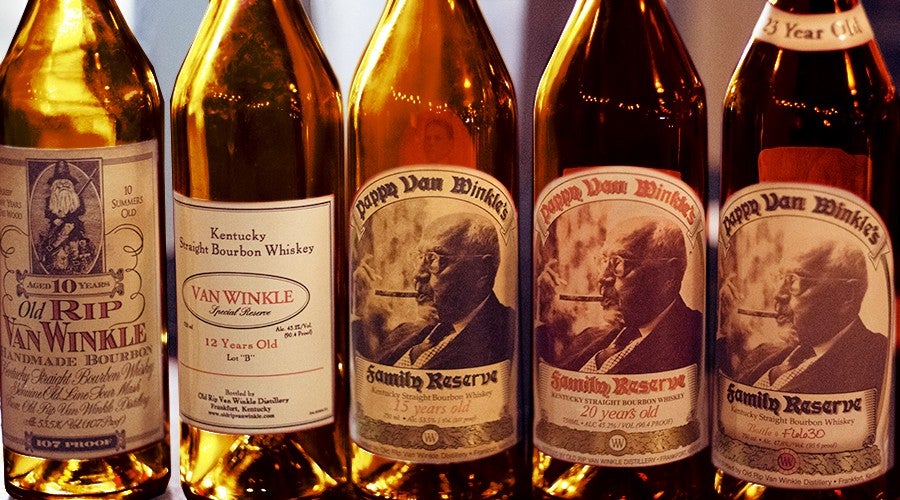
There are six types of Pappy Van Winkle bourbon on the market, ranging in age from 10 to 23 years and priced between $50 and $250 per bottle. Due to its age, 23-year old Pappy is the rarest type distilled, considered the “white whale” of bourbon whiskeys. According to the results of the 2014 San Francisco World Spirits Competition, the Pappy 20-year-old variety was the highest rated bourbon in the world, scoring 99 out of 100; it has become as nearly hard to find as the 23. Nearly all of the missing bourbon was the 20-year-old variety.
The Buffalo Trace Distillery, which makes Pappy, only produces about 84,000 bottles of all Pappy varieties combined each year. Traditionally, stock was distributed only twice annually, always causing a consumer frenzy. More recently the release has been reduced to once a year, in November, when true fans in Kentucky camp out all night in front of their local liquor store, to be first in line when the doors open for business. Last year the entire supply at one store, at $250 a bottle, sold out in 42 minutes.
Thereafter, online auction prices ranged from $1,500 to $3,000 a bottle.
One week after Curtsinger’s arrest, a local businessman named Mark Rutledge came to the prosecutor’s office and told investigators that in early February, two months before Curtsinger’s arrest, he’d bought one bottle of Pappy from Curtsinger for $850. In March, a few days before the raid, Rutledge said, he’d purchased nine bottles of Pappy for $3,000. Rutledge also said Curtsinger offered to sell him a single bottle of the 23-year-old Pappy for $1,500. Nearly all of the bottles Rutledge turned over to police matched bottles in photos found by police on Curtsinger’s phone.
As word spread, more calls started coming into the sheriff’s office from other bourbon buyers who said they’d bought bourbon from Curtsinger or others connected to him. All of the callers claimed they didn’t know the whiskey had been stolen.
From what police could piece together from a search of Curtsinger’s electronic devices, Curtsinger had participated in thefts of multiple barrels and bottles of bourbon. It also became clear that the 2013 heist was just the tip of the iceberg. If what they were finding out was true, alarming amounts of whiskey were being stolen from Buffalo Trace and at least one other distillery in the area. Also buried in the digital evidence were multiple references to Curtsinger’s illegal trade in steroids and other performance enhancing drugs.
Most alarming, perhaps, was Buffalo Trace’s corporate reaction. To local sources, at least, it seemed curious that this big company, Sazerac, continued to show an alarming lack of interest in keeping track of its valuable inventory.
As part of his investigation, Detective Farmer called Searcy’s supervisor at the Wild Turkey distillery, who confirmed that the company was unable to readily account for each barrel Searcy transported. The detective would find out later that practices on the loading dock were so casual that drivers could simply tell the dockhand how many barrels to put on the truck. Without a stringent inventory control system in use at the plant, a driver could easily inflate the order. No one was even checking.
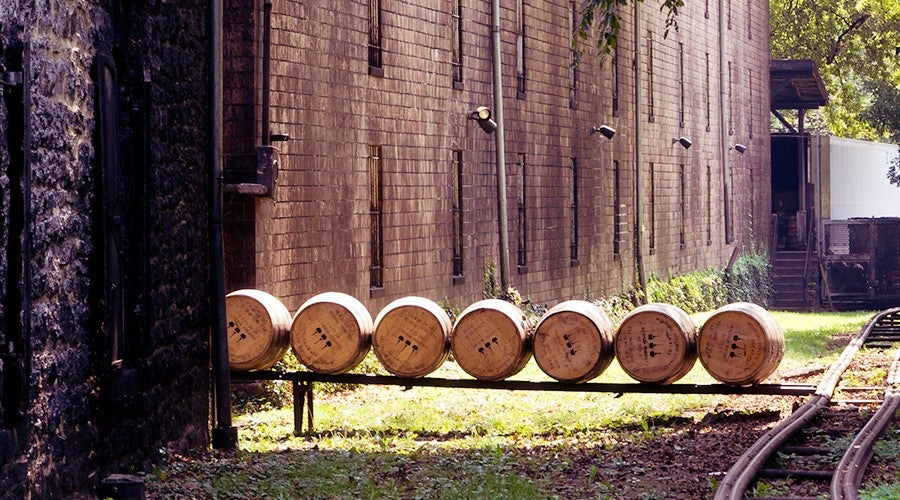
Over the next month, Farmer discovered an open secret in the culture of the bourbon industry: Employee pilfering was the norm. Many distillery workers thought nothing of regularly filling jugs and bottles from barrels and taking them home, mostly for personal use.
But the scale of Curtsinger’s apparent ongoing operation was something else again.
Farmer and other sheriff’s officers tracked down and recovered stolen bourbon in six counties, uncovering a network of dozens of people who were connected. Some worked at Buffalo Trace; others were recreational softball players; others knew each other through a shared babysitter. All of them were funneling stolen bottles, jugs and barrels of bourbon throughout the state and beyond.
A former Buffalo Trace employee told police she’d reported to management that the metal cage at the plant where the Pappy is stored had faulty hinges, and the door could be removed by simply popping out the bolts. She said she suspected that the theft reported in 2013 had actually occurred over a number of years because the bourbon was inventoried when it was put in the cage but not counted again until it was sold. There was no telling how much had been taken in total.
The bourbon that customers waited for all year long — standing in lines with raffle tickets in hand or paying 10 times the retail price in online auction bids — could be removed from the distillery with little more than a screwdriver.
As recently as 2008, even the oldest Pappy, the 23-year, could be found on some shelves in bourbon country. The younger varieties — 20, 15 and 12, were easy for consumers to purchase. Since the 2013 thefts, however, Pappy has become so rare that it is almost impossible to find using legal channels.
“No one should be paying the price they are paying for Pappy, but they are,” says bourbon aficionado and blogger Tom Fischer. “Pappy represents something beyond itself. It’s not just bourbon, it’s a status symbol.”
Rachael Peake agrees. In 2006, she opened Capital Cellars, a liquor store in downtown Frankfort, after years working as a national sales rep for the Sazerac Company. “When we first opened, we would buy the 20- and 23-year-old Pappy and it would sit on the shelves for weeks,” she said. When she wanted an order of Pappy, she’d just call her distributor and tell them the number of cases. In the past she’d order up to 36 bottles at a time.
These days, Peake says, she doesn’t have a choice about how much Pappy she gets — there’s a number worked out between her distributor and the Sazerac Company. She gets what they give her — the company is now down to one shipment each November. In 2014, she was allotted only 13 bottles.
Due to the lack of supply, Peake says, customers come to her with an air of desperation. “Looking for Pappy. Please call me. Getting married,” said one recent message. Another message she got this year noted that a dying man’s final wish was to have a bottle of Pappy, any age available.
Sazerac Company lists this year’s suggested retail price for a bottle of the 23-year-old Pappy at $250. Peake says she could charge whatever she wanted but keeps the markup fairly low, charging about $300. Not long ago a man came into her store and showed her $3,000 cash. He wanted three bottles of Pappy.
She turned him down.
As detectives continued their investigation, a picture of Toby Curtsinger emerged. The 46-year-old had worked more than half his life at Buffalo Trace Distillery, since before it was bought by Sazerac. He’d risen to a senior position, where he had access to nearly all parts of the property. According to police reports, the 240 pound Curtsinger was known to take target practice, with a silenced .22 caliber pistol, near a pile of trash at the work site, a few hundred yards away from where tourists were being led around the facilities.
According to police, Curtsinger made a sideline of loaning money to co-workers. When some were unable to repay him, Curtsinger would press them into stealing bottles of Pappy from the plant. If a defaulting co-worker failed to play along, police said, Curtsinger was known to sabotage their work, so that factory officials would reprimand or fire them.
Austin Johnson, another Pappy employee, whose kids played with Curtsinger’s kids, told police that Curtsinger would often brag to him about all the bourbon he was stealing. Curtsinger described how he and Searcy would unload the bourbon from the back of trucks with an aluminum ladder as a ramp and store them at Searcy’s stepfather’s home or at Curtsinger’s. He bragged that he had shelves of the rare Pappy bourbon in his basement and could drink any age of the seemingly rare liquor whenever he wanted. One time, Curtsinger boasted, he and another man had taken a forklift and moved a pallet of Eagle Rare — about 400 bottles of premium bourbon — over the factory fence and onto the bed of a pickup truck. The pickup was so heavy with the load, according to police, that the truck bottom dragged on the ground. The load was hauled about 100 miles to Somerset, Kentucky, and sold to one man for $27,000, a discount from the estimated retail value of more than $32,000.
In late 2014, Curtsinger started telling Johnson he wanted him to help steal some metal barrels of bourbon from building 3 at Buffalo Trace, where barrels of aged, pre-bottled bourbon was stored. Initially, Johnson told police, he said no. But when Curtsinger showed up one night to do the job, according to police, Johnson went along.
As visitors were walking the main grounds of the plant, taking a special nighttime tour, Johnson hid under a tarp in the backseat of Curtsinger’s truck, and they entered the property. On the first trip, according to police, the two men used a forklift to take six barrels. On another occasion, they took five more barrels in the same way. When police later searched Curtsinger’s laptop and phone they found pictures of 11 metal barrels, more than 250 gallons of bourbon valued between $250 to $500 per gallon, depending on the age of the liquor, which was not listed in police reports.
On April 21, five weeks after Detective Farmer got the first text tipping him off to Curtsinger’s involvement, Sheriff Melton stood at a podium in the basement of his headquarters and announced the arrest of ten people and the recovery of more than $100,000 worth of bourbon. The investigation, it was announced, stretched into six Kentucky counties and states as far away as Texas.
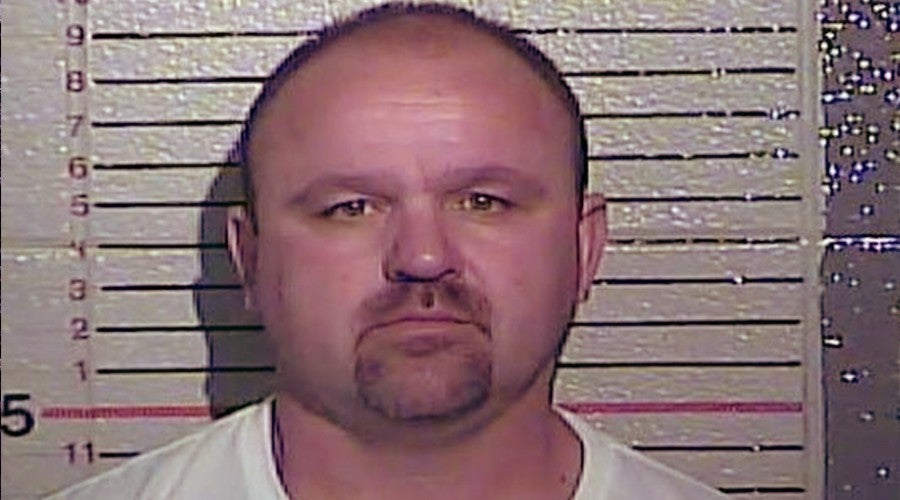
The Kentucky prosecutor on the case has characterized Curtsinger role as the nexus between all of the accused. He is charged with engaging in organized crime, theft of stolen property, illegal trafficking in anabolic steroids, and “trafficking in intoxicating or spirituous liquor.”
Police also charged nine others with varying levels of involvement in an alleged criminal syndicate, including Curtsinger’s wife, Julie, a personal fitness trainer; a security guard at Buffalo Trace; and, Searcy, the driver from Wild Turkey and softball teammate. If convicted, Curtsinger and his co-defendants could face up to 20 years in prison. Since May, at least four have pleaded guilty and agreed to cooperate with prosecutors. Each of them faces a year in jail if they commit another crime, but otherwise will remain free.
The original trial date for Curtsinger and the others was September 2015, but the case has been rescheduled after a series of motions filed by Curtsinger’s attorney, one of which seeks to discover the identity of the tipster whose text re-opened the investigation.
The trial date is due to be scheduled at a hearing in early 2016.
While evidence in the criminal case against Curtsinger traces thefts back to 2008, investigators now believe it’s possible to trace some of his thefts back to 2006 or perhaps further.
Based on the investigation, and information from multiple witnesses, police think Curtsinger may have hauled pallets and barrels of bourbon out of the distillery for at least five years prior to Pappygate.
Sources in Frankfort in September said they’ve heard that the distillery was being audited by federal tax agents. Buffalo Trace representatives declined to comment on their inventory practices or on any specifics involving Pappygate or the current case and investigation.
In an email, company spokeswoman Amy Preske told MEL, “We have made adjustments and improvements to our security program which we are obviously not prepared to discuss in public.”
Local sources, who wish keep their names off the record, wonder out loud just why there has been so little accountability at the distillery for so long. (The problem appears to persist to this day: during a reporting trip to Frankfort in September, I drove through the gates at the Pappy distillery and poked around the property for nearly thirty minutes before being questioned by a security guard.)
While the scope of the thefts will probably never be known, records show that during the months of March and April of 2015, police recovered 28 bottles of Pappy, nine stainless steel barrels from Buffalo Trace, 22 wooden barrels, nearly all from the Wild Turkey Distillery barrels and the equivalent of five more barrels of Pappy in various containers — about 1,000 gallons. One stainless steel, 23-gallon barrel of bourbon has a retail value of about $11,000.
While some of the recovered bottles, with legal stamps and seals still intact, may be eligible for a charity auction, the majority of the recovered bourbon — which sells at a stylish bar in Lexington, Parlay Social, for $225 for a 2 ounce shot of Pappy 23 — cannot be sold.
Instead, it will be burned in a training exercise for firefighters.
Todd South is a journalist based in New Jersey.
